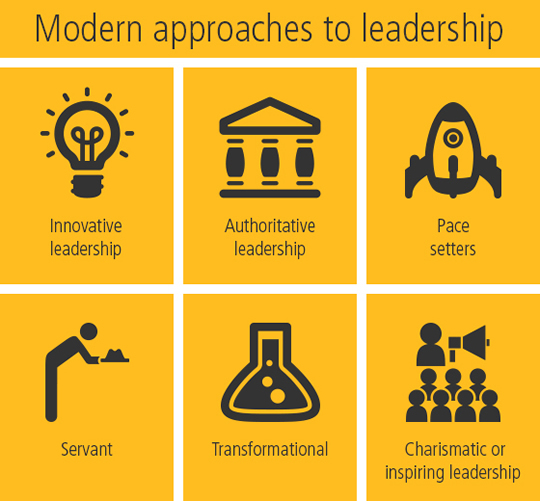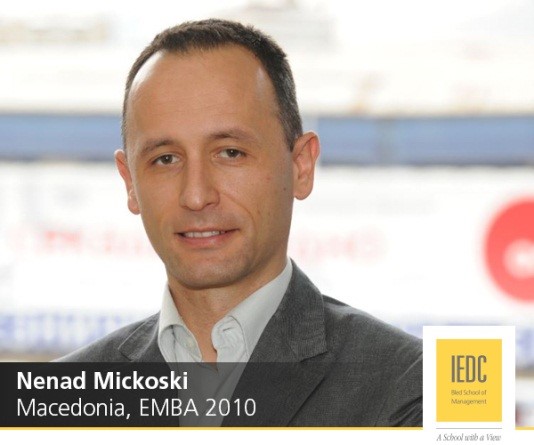Are good leaders made or born? This is probably one of the most difficult questions considering that every individual has different perspectives on what a good leadership is. Being a leader is not an easy task because you have to serve as a role model a mentor at the same time. That is why leaders should build a strong character and deeper understanding of what it takes to be a successful leader – someone that people would look up to.

Most common modern approaches to leadership
- Innovative leadership. Leaders gasp the entire situation and go beyond the usual course of action. They are good at visualizing the future and know exactly what is working and what not as well as bring new ideas and vision into reality.
- Authoritative leadership. Leaders dictate procedures and policies, decide the goals that need to be achieved, and control and direct activities without meaningful participation by other employees.
- Pace setters. Considering that communication plays an important role in an effective leadership, pace setter leaders use proper communication in setting high standards of performance for both the group and themselves. They optimize behaviors that are sought from others in the group.
- Servant. This is one of the most common approaches to leadership and the one most widely used in practice. Leaders put their service to other people in the group before their own interest and include the team in decision making.
- Transformational. In today's modern world, the society is in need of transformational leaders who would bring positive and meaningful changes. Transformational leadership is where the leaders expect transformation on their teams even if it is uncomfortable and believe that everyone will do their best. They also serve as inspiration and role model to their people.
- Charismatic or inspiring leadership. This type is primarily based on the leader's charisma or his/her personal qualities and is one of the most common approaches to leadership. Leaders are seen to possess strong sense of vision and mission and arouse a very strong emotion in each of their followers. Leading others is determined by the type and source of power that is held by the leaders.
It is not easy to become an effective leader but being aware of different approaches to leadership allows aspiring leaders to get to know the necessary skills, abilities and personal characteristics essential to achieve their main mission - to serve and not be served. This is what makes a good leader who knows how to handle his/her people and appreciate their worth.
Summary Sources: Harvard Business Review: Leadership that gets results; The Center for Association Leadership: 8 Common Leadership Styles; Forbes: Which of 4 Leadership Styles is Yours?
Alumni Do
Jan Kettnaker: The intended and unintended power of questions

What it means to be an inspiring leader? Ask a lot of questions!
As a manager or informal leader you’ve probably received this piece of advice multiple times in your career. In many contemporary management programs and courses, these simple words form an important tool in the future toolkit of the student. The underlying idea is simple; by asking a lot of questions a manager achieves a number of goals. He or she extends his knowledge about a certain topic, employees or co-workers become involved in the subject matter and get to voice their opinions, and hitherto common but not stated workgroup knowledge gets formulated and spread. If you have a new position at your current employer or start at a new employer, the habit of asking questions naturally becomes even more important. And, indeed, working environments where asking questions, not only by managers, is commonplace tend to work better and achieve better results.
However, judging by my own experience, there is an important caveat in the asking questions concept.
For the questions process to be productive the questions need to be sincere and not guiding, the answers honest and replies like ‘I do not know’ allowed. And this, unfortunately, is not always the case at workplaces. Managers use guiding questions to produce certain answers, often to achieve short-term gains. Answers are twisted to conceal crucial components that are sensitive to reveal. And in many environments admitting not to know is still a big no-no. For employees used to these types of workplaces, well-meaning questions will be interpreted as if there is a catch, the answers will be formulated accordingly and the ‘I do not know’ will become a ‘it seems as if that is perhaps not entirely impossible’…
So before you start asking all those good questions, try to figure out what kind of environment you are in and what questions legacy there is.
And if it is not the conducive type, prepare your audience by setting the scene on questions and answers. Only then will the full power of your well thought-through answers be unleashed.
Jan Kettnaker is an EMBA 2011, CEO of PacketFront Software, Sweden
Nenad Mickoski: Learn new lessons and sometimes find inspiration from strange unexpected places

The parallel between being a parent and a leader
Having completed the IEDC curriculum interwoven with so many brilliant quotes and lessons on leadership and knowing that all of the Alumni have long years of business experience behind, makes it no easy task to provide an insightful leadership experience to such audience. Yet, I guess many of us learn new lessons and sometimes find inspiration from strange unexpected places. For me, the parallel between being a parent and a leader was something that taught me quite a few valuable lessons …
Become a role model
For example, it was not until I got few kids of my own until I finally understood that people (and kids for that matter) learn to act in a certain manner from what they see, not from what they are being told. So the only way to make people behave in a certain way is to consistently act in that very same way, particularly in the hardest moments of business and life. And even more, just as kids need a parent whom they can undoubtedly trust, so do people in organizations need such a leader. A parent leader who will set the frames and then give freedom within these frames overseeing the growth of his people which would eventually lead to the formation of fully independent individuals.
What we do is meaningful
And as people in organizations (just like kids) grow mature, they need more than just learning. They need to know that what they do is meaningful, that it is good not only for them and the company, but also for their colleagues, the customers, the society as a whole. It is the job of the leader to make sure that people can see, feel and embrace this.
In our organization we tried to summarize this philosophy of work in one sentence: “We work for the company as if it were our family company; we treat colleagues and users the way we would like to be treated by them!”
Good business results than become not the main target but a natural consequence of this way of work. And however enthusiastic, strange or unconventional it may sound, my leadership experience so far has proved it particularly correct.
Nenad Mickoski is an EMBA 2010, Macedonia